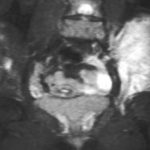1. The United States regimen had greater event-free survival and less associated febrile neutropenia compared to the European regimen.
2. More platelet transfusions were required with the European regimen, but more blood transfusions were required with the US regimen.
Evidence Rating Level: 1 (Excellent)
Study Rundown: Ewing sarcoma is a rare bone and soft tissue cancer that typically occurs in the second decade of life. There is currently no international standard chemotherapy regimen for the disease. This study aimed to evaluate two different chemotherapy regimens, one used mainly in the United States (US) and one in Europe. Participants with confirmed Ewing sarcoma were randomized 1:1 to either the European or US regimen. After three years, event-free survival was higher in the US regimen compared to the European regimen. Additionally, less chemotherapy-associated febrile neutropenia was seen in the US group compared to the European group. Platelet transfusions were required more often in the European group, but blood transfusions were required more in the US group. Limitations of this study include the switch from excluding patients with metastatic disease prior to 2016, but then removing this exclusion criteria after 2016. Nonetheless, this study promotes the US chemotherapy regimen for international standard of chemotherapy treatment for Ewing sarcoma.
Click to read the study in the Lancet
In-Depth [randomized controlled trial]: EURO EWING 2012 (EE2012) was an international multicentre randomized controlled phase 3 trial that enrolled participants between March 21, 2014 and May 1, 2019. Eligible patients were aged 2-49 years with confirmed Ewing sarcoma of the bone or soft tissue, or Ewing-like sarcoma. A total of 640 patients were enrolled and randomized 1:1 to either the European regimen (vincristine, ifosfamide, doxorubicin, and etoposide induction, and consolidation using vincristine, actinomycin D, with ifosfamide or cyclophosphamide, or busulfan and melphalan) or the US regimen (vincristine, ifosfamide, doxorubicin, cyclophosphamide, and etoposide induction, plus ifosfamide and etoposide, and consolidation using vincristine and cyclophosphamide, or vincristine, actinomycin D, and ifosfamide, with busulfan and melphalan). The primary outcome was event-free survival with a median follow-up of surviving patients of 47 months. At 3 years, the event-free survival was 61% for the European regimen and 67% for the US regimen (adjusted Hazard Ratio 0.71 [95% CI 0.55-0.92]). Grade 3-5 febrile neutropenia occurred in 74% of the European group and 58% of the US group. More patients required platelet transfusions in the European group, but more patients required blood transfusions in the US group. In summary, the US regimen (vincristine, doxorubicin, cyclophosphamide, ifosfamide, and etoposide) was more effective and less toxic than the European regimen.
Image: PD
©2022 2 Minute Medicine, Inc. All rights reserved. No works may be reproduced without expressed written consent from 2 Minute Medicine, Inc. Inquire about licensing here. No article should be construed as medical advice and is not intended as such by the authors or by 2 Minute Medicine, Inc.


